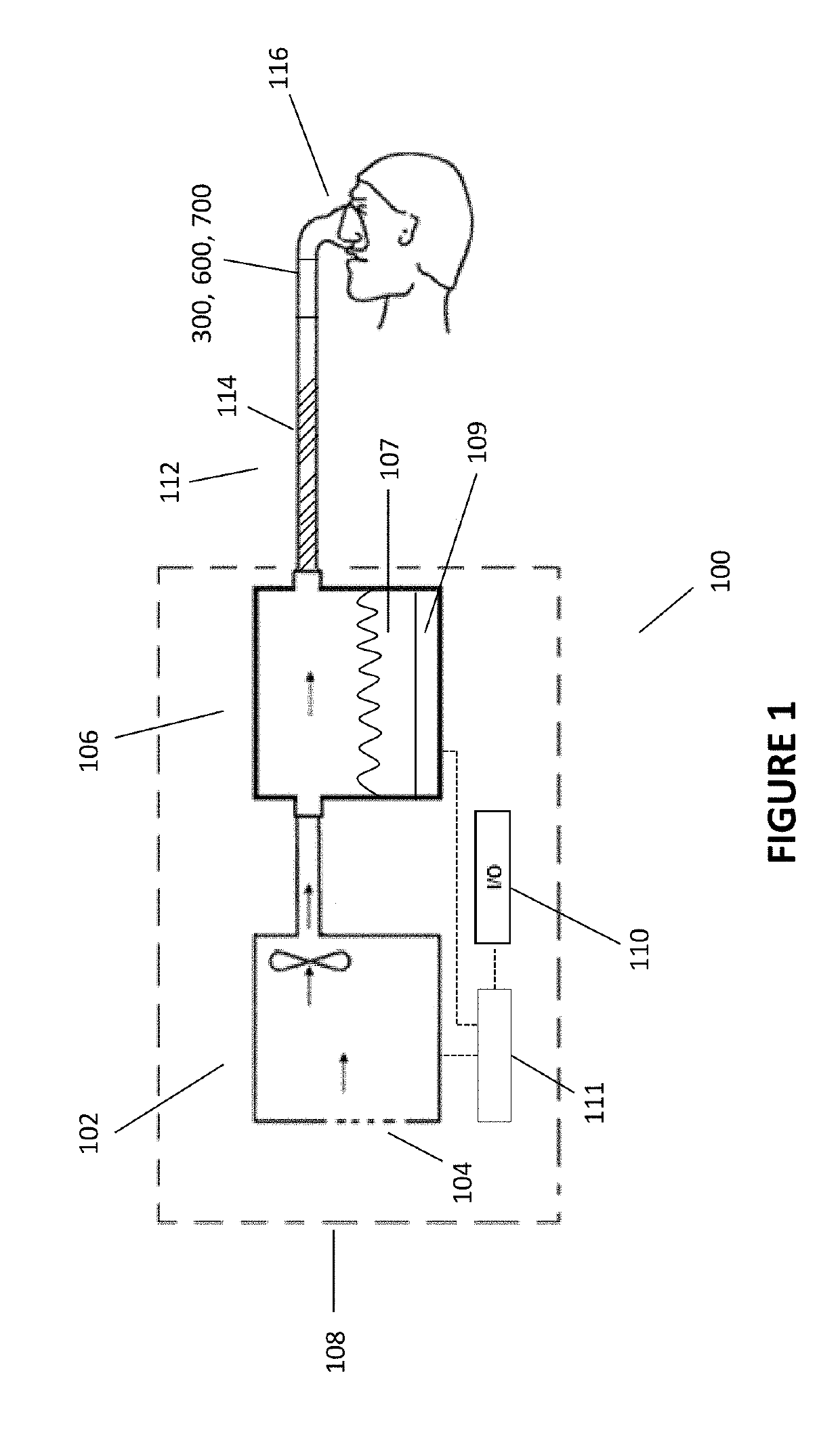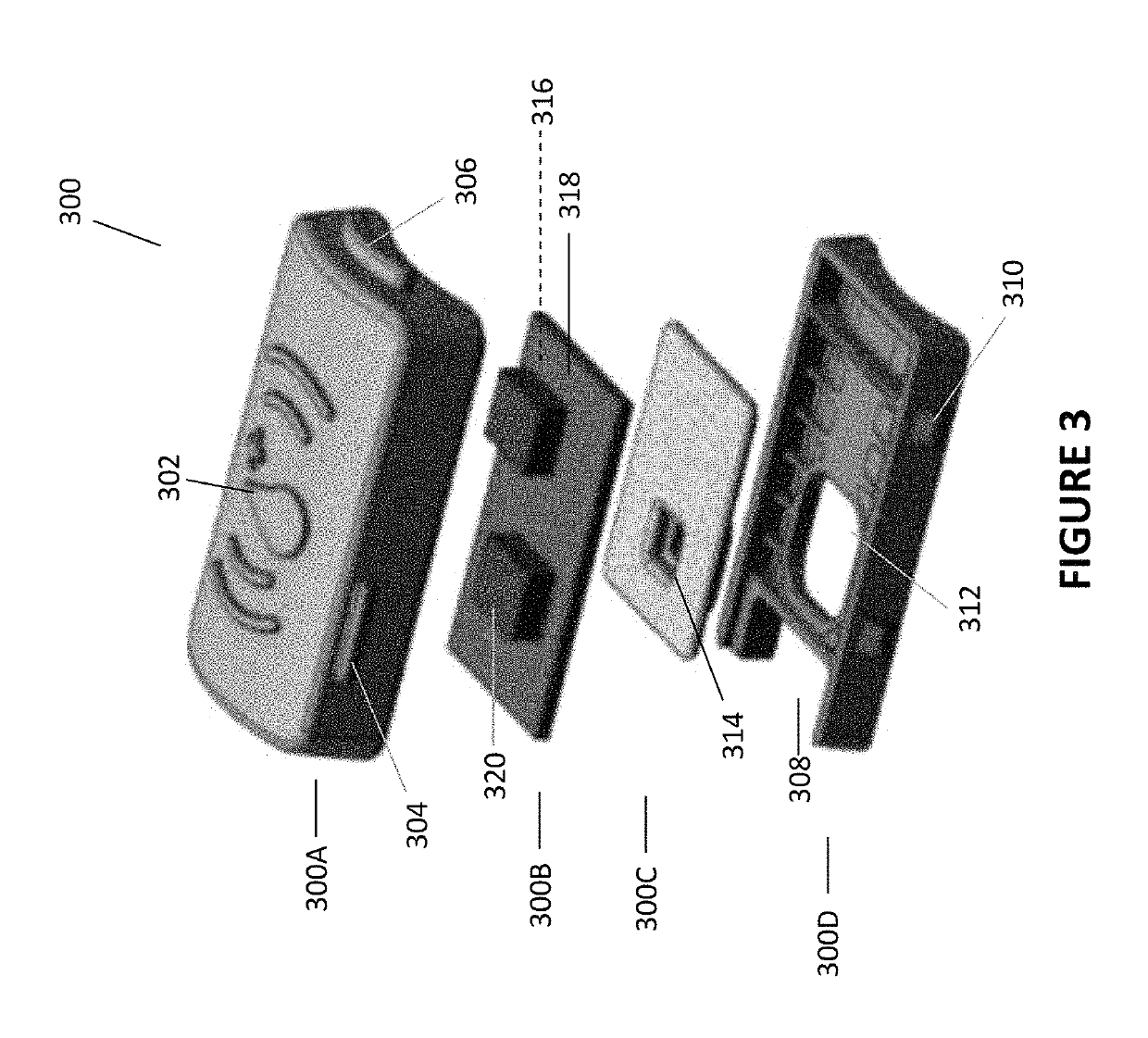Sensing and control arrangements for respiratory device
a technology of sensor modules and control arrangements, which is applied in the field of sensor modules and control systems, can solve the problems of reducing the convenience or increasing the cost of using sensors, unnecessarily increasing the cost of the respiratory therapy system, etc., and achieves the effects of reducing convenience, facilitating the use of closed-loop control systems, and improving model accuracy
- Summary
- Abstract
- Description
- Claims
- Application Information
AI Technical Summary
Benefits of technology
Problems solved by technology
Method used
Image
Examples
Embodiment Construction
[0017]With reference to the non-limiting exemplary embodiment illustrated in FIG. 1, a respiratory therapy system 100 is shown. The respiratory therapy system 100 comprises a flow generator 102. The flow generator 102 comprises a positive airway pressure or PAP device. The flow generator 102 receives gases from a gases inlet 104 and propels them to a humidifier 106. The flow generator 102 and humidifier 106 may be part of an integrated flow delivery system or may share a housing 108. The humidifier 106 heats and humidifies the gases. The humidifier 106 comprises a quantity of water or another moisturizing agent 107 (hereinafter referred to as water). The humidifier 106 also comprises a heating plate 109 that may be used to heat the water in the humidifier 106 to encourage water vaporization and / or entrainment in the gas flow and increase the temperature of gases passing through the humidifier 106. The heating plate may, for example, comprise a resistive metallic heating plate. Heate...
PUM
 Login to View More
Login to View More Abstract
Description
Claims
Application Information
 Login to View More
Login to View More - R&D
- Intellectual Property
- Life Sciences
- Materials
- Tech Scout
- Unparalleled Data Quality
- Higher Quality Content
- 60% Fewer Hallucinations
Browse by: Latest US Patents, China's latest patents, Technical Efficacy Thesaurus, Application Domain, Technology Topic, Popular Technical Reports.
© 2025 PatSnap. All rights reserved.Legal|Privacy policy|Modern Slavery Act Transparency Statement|Sitemap|About US| Contact US: help@patsnap.com



